FARM TO TABLE
Sweet or sour, the world is your apricot
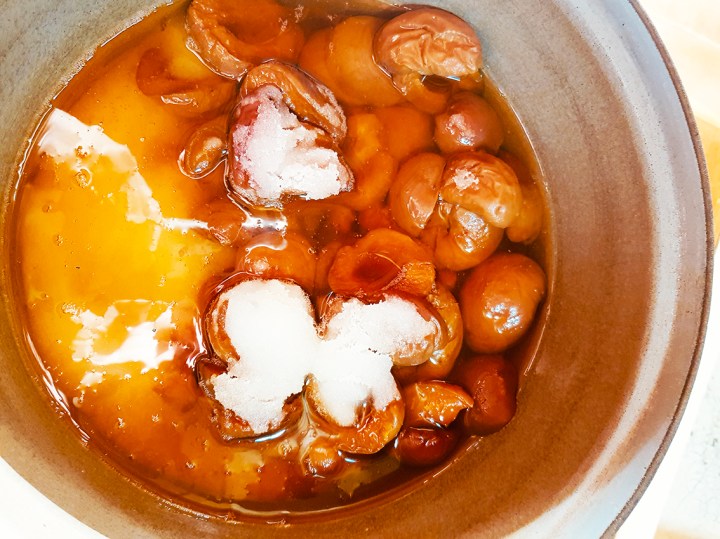
South Africans have in their arsenal of cooking skills a secret weapon for flavour. Apricot jam. We use it strategically and subtly, to accentuate and elevate other ingredients and add that distinctive South African taste. Even when cooking snoek.
Apricot jam is more than just a condiment in the South African food realm. Yes, we love it on our roosterkoek or freshly baked bread, but we also use it in a plethora of South African dishes from “Pastorie-hoender” to Peppermint Crisp Tart.
Peppermint Crisp Tart, yes. Don’t be surprised. A thin spread of apricot jam layered between caramel, cream and mint chocolate strikes just the right sour balance in this green-and-gold South African favourite. It’s also the tangy surprise hiding underneath a blanket of coconut snow when you bite into a fluffy Hertzoggie. Malva Pudding? Check. They’re a sweet relief in salty, cheesy “lepelsteeltjies” (salty cheese biscuits). And what do you think gives South African snoek-on-the-coals its lovely sweet-and-sour flavour?
I’m biased, but I believe it’s because South African apricots – and our apricot jam – are better than all the rest. I once heard that some global-brand, commercially-canned “apricot jams” contain more pumpkin than anything else… Sweetened beyond any recognition, the “extra fine” paste has no detectable ties with any self-respecting apricot.
Not our jam. Real South African apricot jam is a little chunky and sweet and you can even distinguish the fibre strands of the fruits in the cooked product. It also has that definitive tang. It’s unmistakably APRICOT.
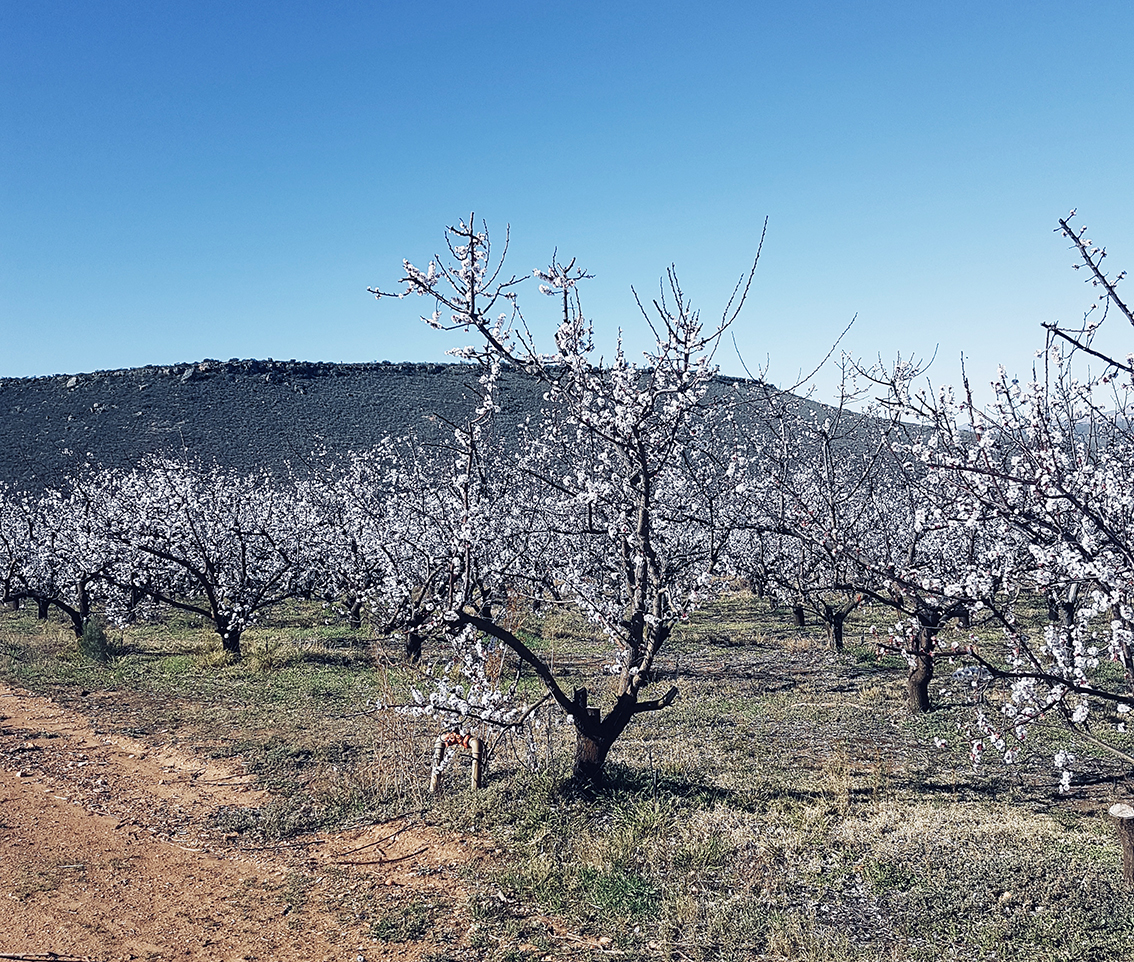
Springtime on Klein Dwarsfontein Boerdery in the Langkloof just outside Uniondale. Apricot trees thrive in cold, arid regions. Photo: Yolanda Lombard
On average, between 70% and 80% of South Africa’s annual 41,000-tons apricot harvest is processed. Approximately 18% is dried. Only about 8% and 3% is exported and sold on the local market, respectively.
In other words, 80% of South Africa’s apricots become jam (or they are used alongside peaches in Mrs Ball’s famous chutneys). This translates in our cooking too. Whole, fresh apricots aren’t a big part of our cooking compared to their dried and processed counterparts, especially in traditional Afrikaans and Cape Malay cuisines.
“The sweet tanginess perfectly complements dishes like our Malay-inspired curries and bobotie,” says renowned Karoo cooking- and jam-queen Heyla Meyer. She says the taste of a good, homemade apricot jam is what people in the Platteland grew up with. “The taste brings back memories of my grandmothers. They had fruit orchards on the farm and in summer we had to preserve everything we couldn’t consume fresh.”
Apricot trees thrive in arid parts of the world such as Turkey, Iran and Egypt. All these regions, like the South African Karoo, have a rich culture of using the fruit in traditional cooking.
Annette Human’s Lekker Vir Later – Die Suid-Afrikaanse A-Z van Inlê (Human & Roussouw) has a whole section dedicated to the apricot.
“Because every Platteland home – even the ones in town – has some sort of fruit tree in the backyard,” Heyla says.
There are many ways to be inventive with a surplus of such a versatile product. Old-time favourites like boerenooiens (apricots pickled in pure brandy) and Meebos (dried and candied apricots) aren’t as prevalent in modern cuisine, but making jam remains one of the easiest and most practised ways of preserving fruits.
“If you’re a first-timer, especially, the secret is to not cook too much at a time,” Heyla says. “No more than 3kg per batch. The margin for error is smaller this way and you can produce beautiful, bright jam every time.”
My mom and I cooked a batch of apricot jam last week. In the middle of winter! We have a 530-litre chest freezer dedicated to the year-round preserving of halved apricots. Like Heyla, we prefer to cook smaller, more manageable batches of jam when needed.
Our distant family in the Langkloof valley produce some export-quality stone fruits, including apricots. Once a year, after their major harvest season, we organise a bakkie-load to be sent to the Karoo. Hence, the freezer. When our annual load of apricots arrives on the farm, they’re halved and pitted and frozen in 2kg packs.
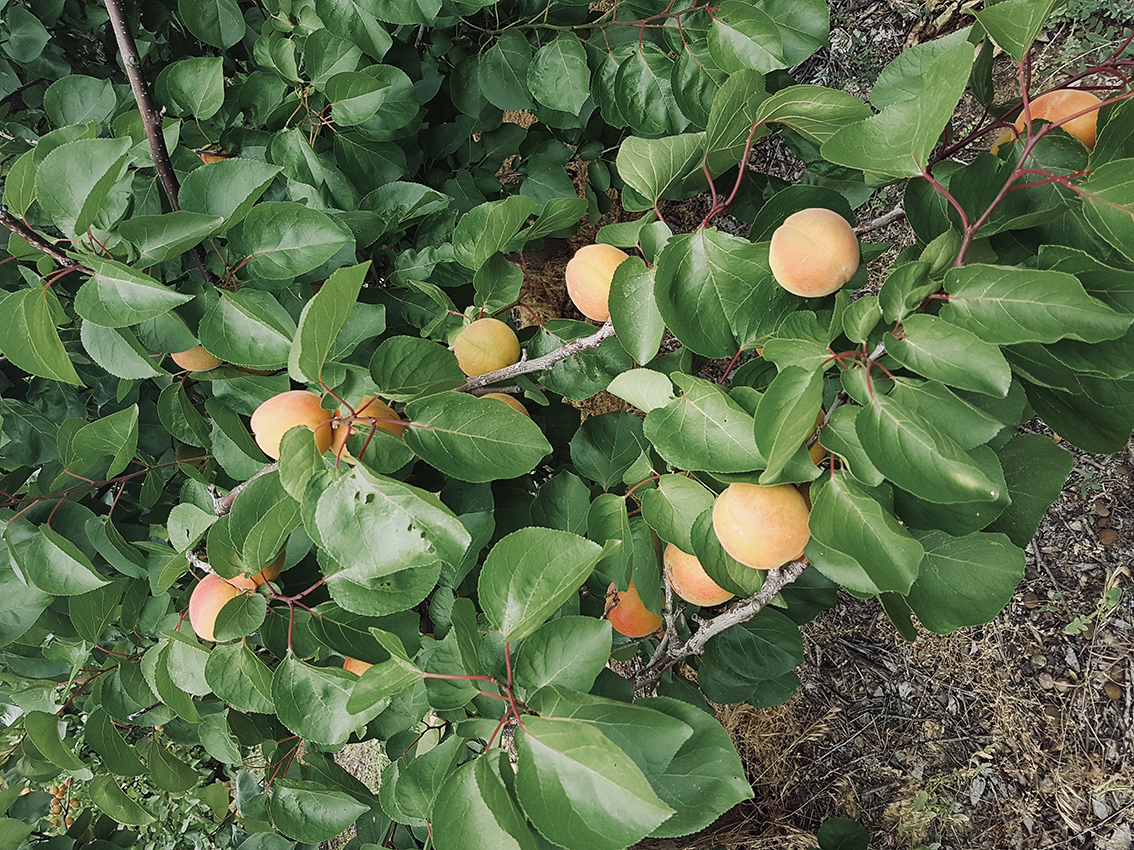
Apricots fruits are harvested in summer, when the warmer climate ensures fruit are blush and ripe. Photo: Yolanda Lombard
There’s a sticky stigma around cooking jam; many people think it’s a messy business ordained for old farmer’s wives who spend their days in front of the stove waiting for the fruits to transform into sticky, sugary liquid.
This couldn’t be further from the truth. In fact, one of the requirements for cooking good jam is that it needs to cook quickly. The quicker you can go from whole fruit to complete condiment, the better. But beware… on the other hand, you also shouldn’t cook the sugars too long as this will result in over-caramelisation and a darker, undesirable jam.
Jam consists of two very simple ingredients. Fruit and sugar, typically cooked in a pound-for-pound ratio. Fruit has a lot of sugar, and sugar, well… it’s sugar. So, you’re essentially working with sugar, which needs a little love and understanding. As with making a syrup or caramel, sugar needs to be melted completely before you can bring it to a boil; otherwise, crystallisation occurs. For jam, too, your sugars need to be dissolved completely before any boiling starts.
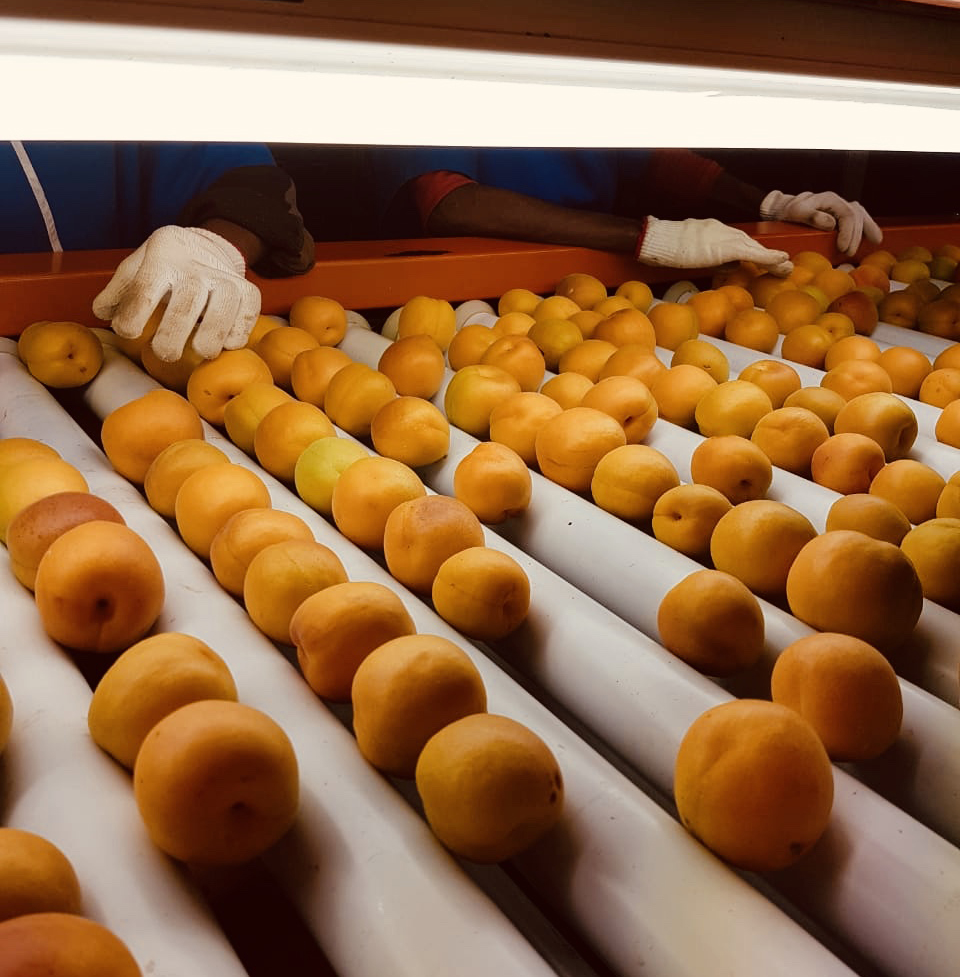
The sorting process is labour-intensive. Workers manually grade fruits as they run by on purpose-built conveyor belts. Photo: Yolanda Lombard
Freezing your apricots aids this “dissolving” process. The moisture in the fruit forms tiny crystals, breaking down some of the fibres in the fruit. To speed up the process even more, we pour granulated sugar over the frozen apricots the night before the actual cooking of the jam. This way, the sugar can also dissolve as the apricots defrost.
By the time you’re actually applying heat to the pot, the jam is already halfway there.
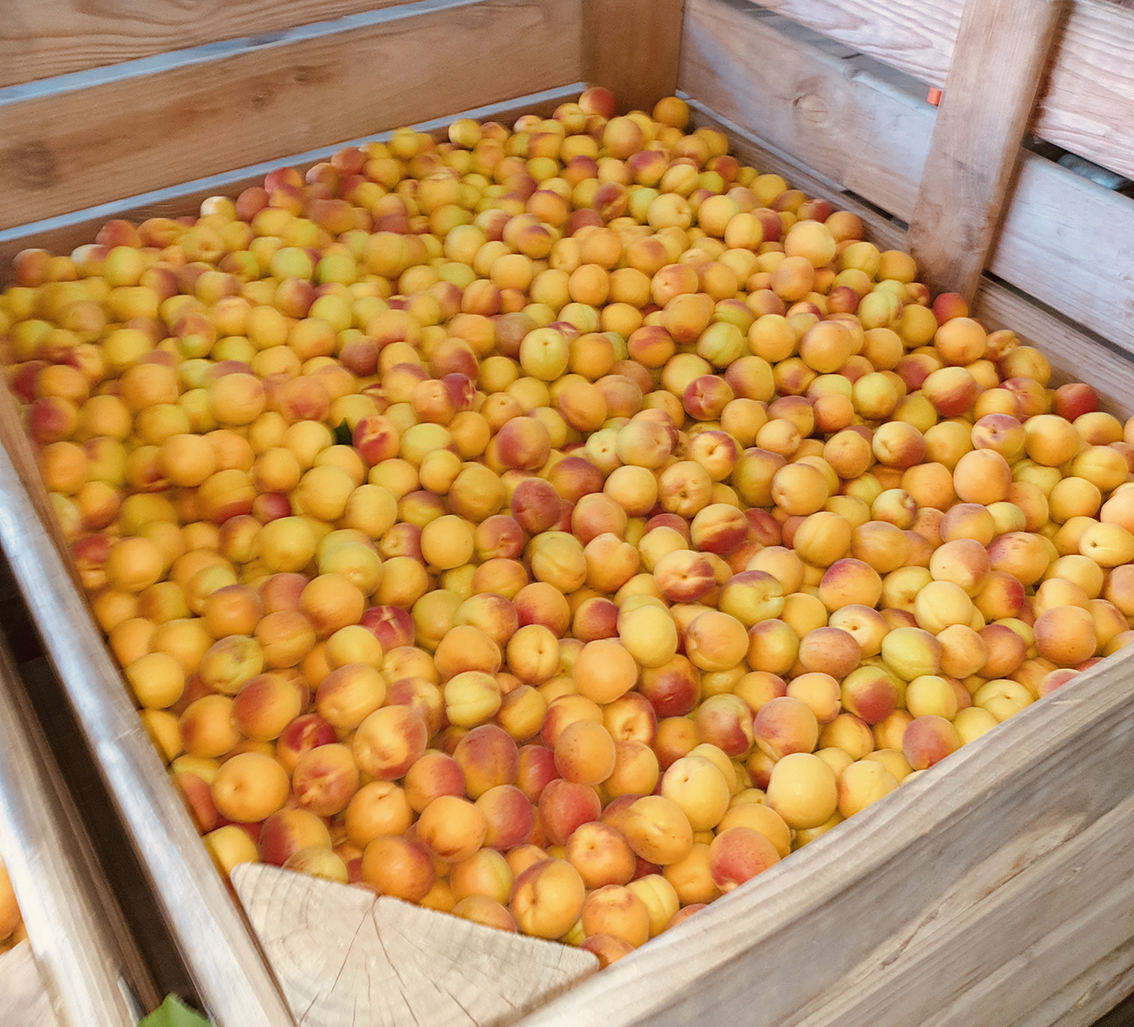
After picking, apricots are washed and sorted in the production hall. Much of the apricots farmed in SA are exported. About 80% is used for processing. Photo: Yolanda Lombard
“Also remember to add a little bit of lemon juice to the pot, even if the apricots are already tangy,” Heyla says. “This develops the natural pectin in the fruits to ensure that your jam is the right consistency.”
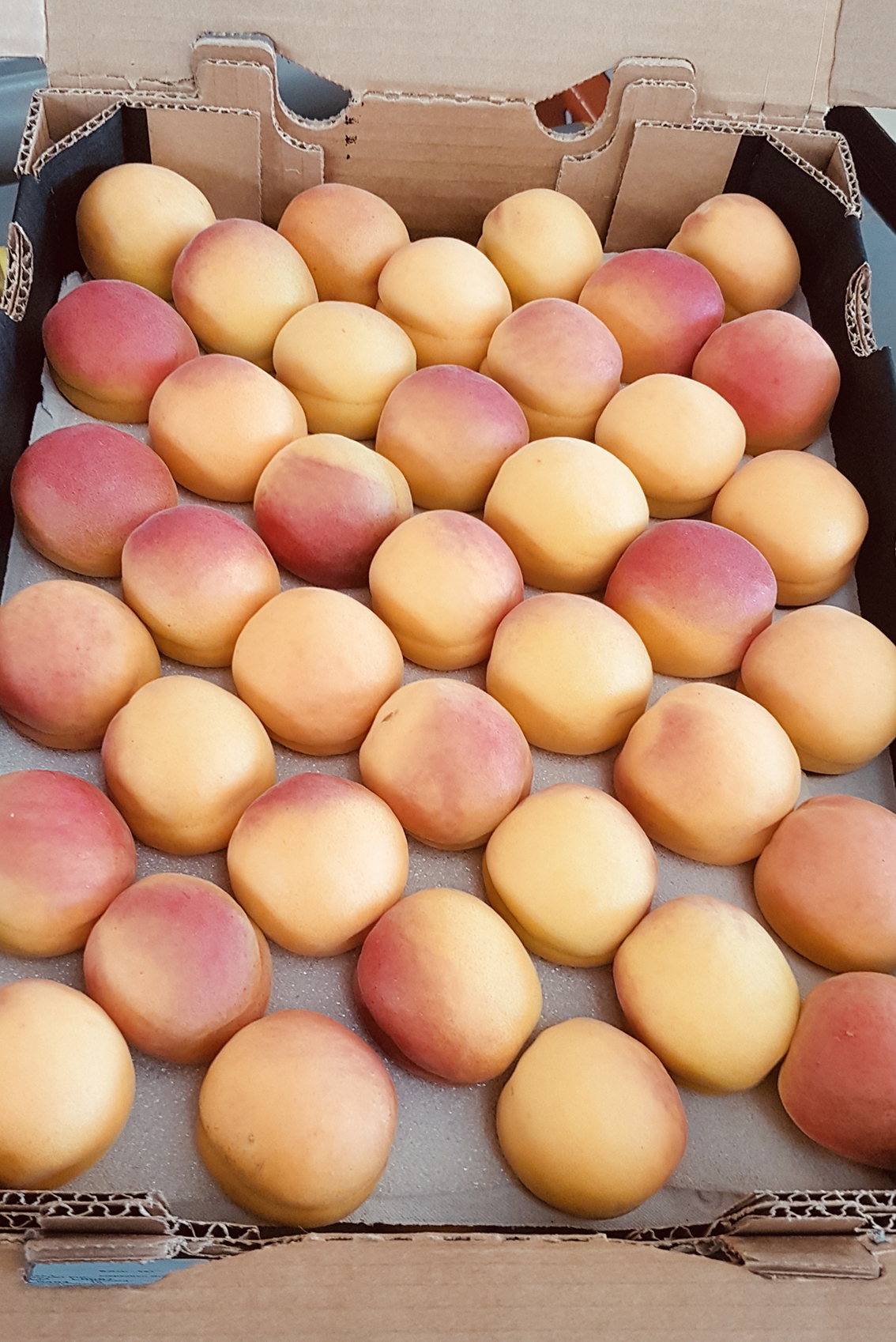
The very best fruits are packed for sale on the fresh fruit market – mostly to be exported. However, even in this massive industry, few fruits are wasted as apricots of all grades can be used for processing. Photo: Yolanda Lombard
From here, there’s no need to meticulously watch the pot to keep it from boiling before the sugar is melted. Just throw it on high heat and let it boil, baby! Within an hour, a beautiful jam is ready to be bottled… and used in your favourite South African classic.
Good jam must be light and bright with a stained glass-like quality to it. When you hold it up in a glass bottle against the light, the colour should be bright tangerine, almost see-through.

A good apricot jam must have a stain-glass-like quality to it, it should be bright and light when you hold it up to the light.
Once you have the liquid gold in hand, the world is your apricot.
Malva Pudding
Try making our marvellous Malva Pudding recipe. The secret lies in using – you guessed it: tangy, homemade apricot jam.
Batter
2 Tbs butter
1 large egg
1 cup sugar
2 Tbs apricot jam
1 cup flour
1 cup milk
1 tsp baking soda
1 Tbs vinegar
Sauce
1 cup milk
1 cup cream
1 cup sugar
1 fresh vanilla bean, split open
Cream butter, egg, sugar and apricot jam until white and fluffy. Sift the flour into the mixture, before adding the milk, baking soda and vinegar. Beat for 12 minutes, exactly.
Grease an ovenproof dish with butter and pour in the batter. Bake until golden.
Meanwhile, boil together the milk, cream, sugar and vanilla. As soon as the pudding is removed from the oven, pour over the warm sauce. It will seem like a lot at first, but the sauce will be soaked in as the baked pudding cools – producing that iconic, gooey taste.
Serve warm with vanilla ice cream or homemade egg custard. DM






 Become an Insider
Become an Insider